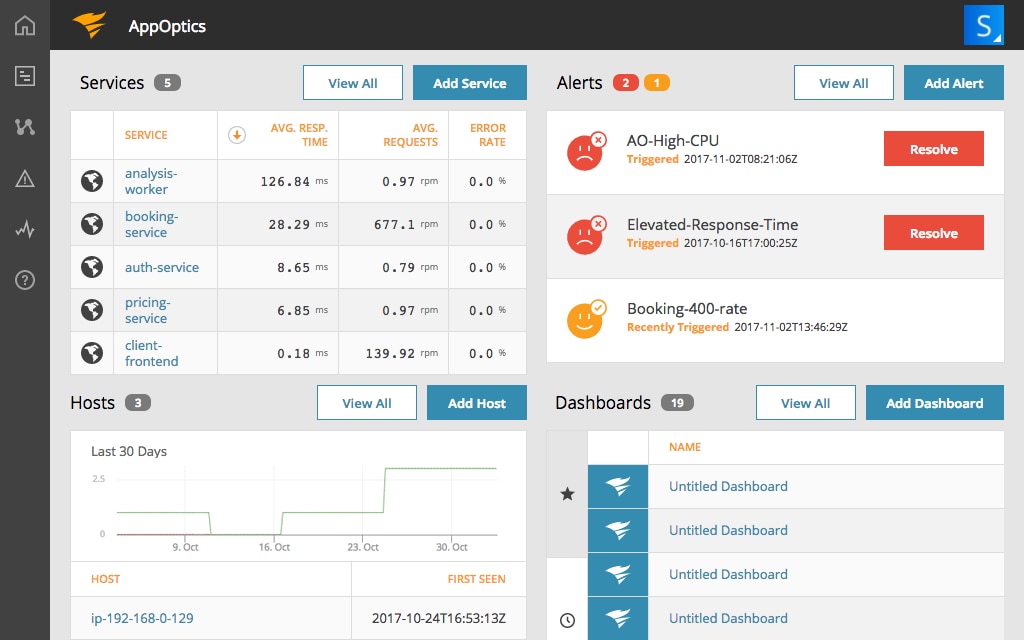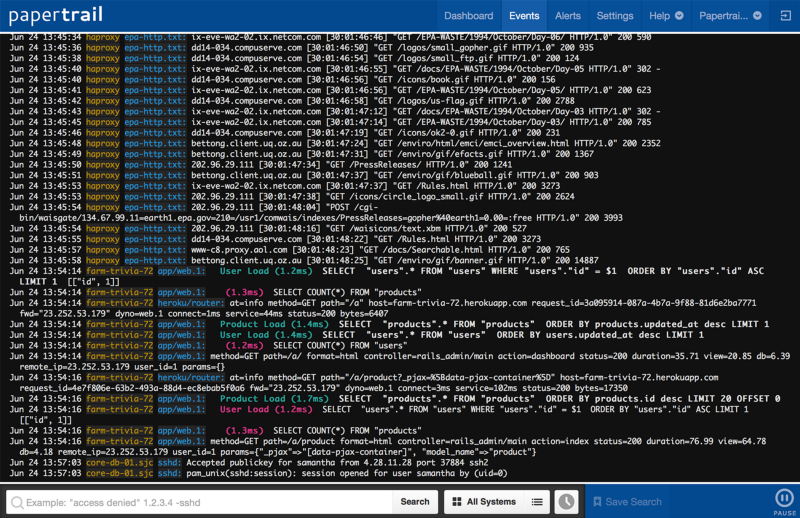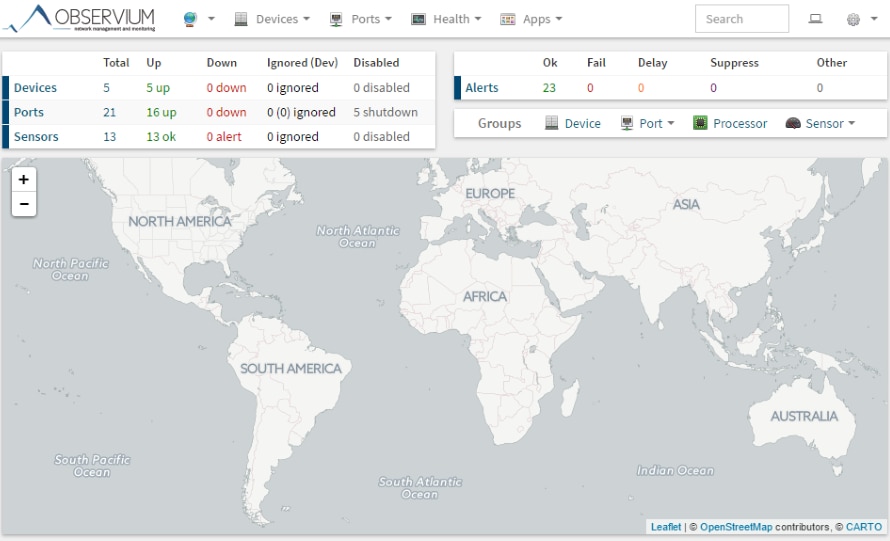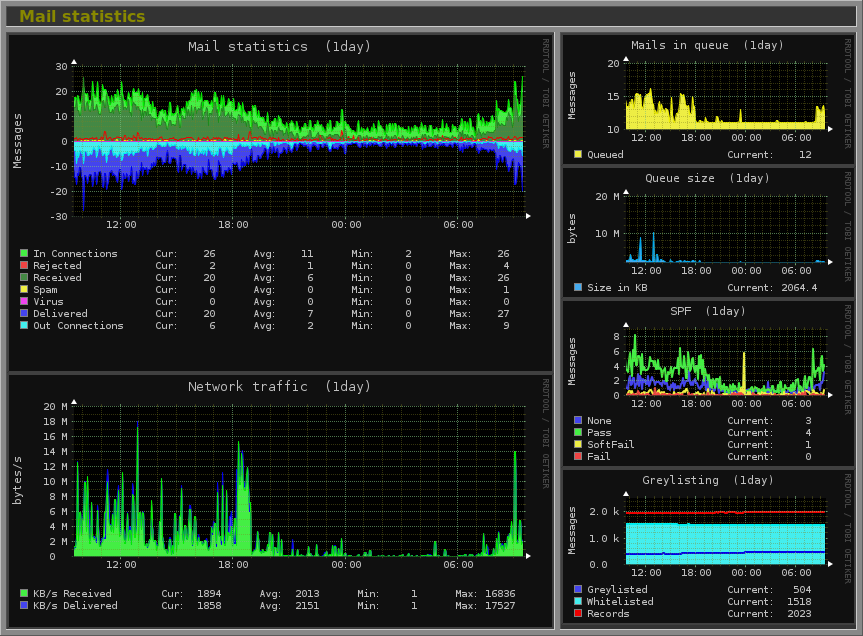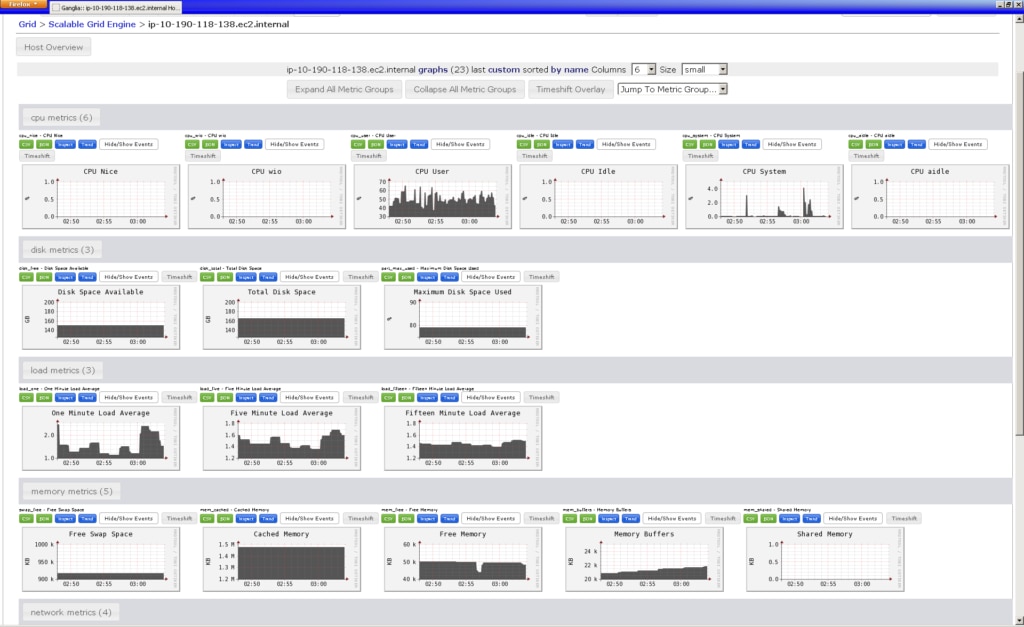Updated: 9/29/2022 2:55 pm
Many companies rely on Linux devices to support critical applications and services. That means it’s important to include comprehensive Linux monitoring tools as part of your overall IT management strategy. Despite their popularity, Linux devices aren’t always easy to manage, as many tools aren’t designed with Linux monitoring in mind. But with the right software, you can identify potential bottlenecks before they cause major issues and more easily keep your network functioning smoothly.
Leveraging Linux performance monitoring tools is essential if you plan to use Linux or Unix systems within your networked environment. Optimization software can offer the visibility you need to ensure your servers are healthy and performing at high levels. Software also supports troubleshooting for Linux machines, helping prevent downtime. If you want to automate and improve your Linux monitoring process, consider the following five tools.
SolarWinds Server & Application Monitor
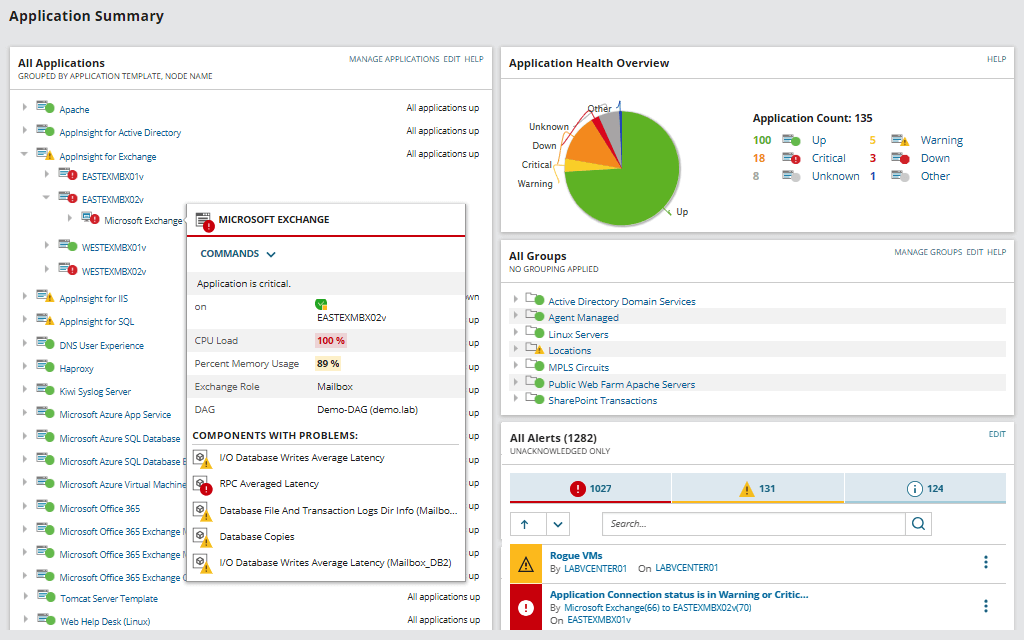
SolarWinds® Server & Application Monitor (SAM) is a powerful yet customizable industry tool designed to spot and diagnose server issues, among many other systems and software, through various monitoring capabilities. By leveraging the out-of-the-box Linux monitoring templates, SAM enables users to discover devices automatically and rapidly begin monitoring them.
The SAM Linux monitoring template monitors a wide array of performance metrics and statistics, including response time, packet loss, and rogue processes occurring in Linux systems. SAM also monitors hardware health by tracking metrics like temperature, power supply, CPU overloads, insufficient RAM, storage issues, etc. This monitoring tool supports the continuous monitoring of these key metrics, enabling users to make capacity forecasts for devices, and plan accordingly for the future.
Along with continuously monitoring critical metrics, SAM leverages intelligent reporting and alerting. Using a statistical threshold-based alerting feature designed to calculate relevant baselines dynamically, the software notifies you immediately whenever a component fails or encounters performance issues. This allows for accessible, round-the-clock insights into the performance of physical and virtual servers of many Linux systems, including Unix and Red Hat Enterprise Linux (RHEL) environments.
Users can run SAM for Linux devices in the cloud, on-premises, and hybrid environments and use agentless or agent-based tech as needed, allowing for in-depth visibility from various locations. Like many other efficient and powerful Linux optimization tools, SAM is a paid solution available through a perpetual purchase or a subscription. You can also try a fully-functional trial for 30 days.
SolarWinds AppOptics
SolarWinds® AppOptics™ is an enterprise software solution designed with your Linux servers and systems in mind. It’s easy to install and provides continuous monitoring capabilities for more than two dozen Linux platforms, right out of the box. Besides Linux-based systems, this tool is built to seamlessly collect monitoring data for a wide range of other applications, databases, and infrastructures. It can scale to provide visibility into large business networks, including hybrid environments.
Use the Solarwinds Snap Agent to collect system metrics for Linux (and Windows) systems. Then view both real-time and historical monitoring data in the unified dashboard. AppOptics tracks essential Linux performance metrics—including CPU usage, load, disk capacity, IO, network performance, memory usage, and swap—and centralizes them in a single user interface. The unified dashboard makes it easy to manage Linux distributions and ensure your systems are properly resourced. In addition, its alerting system sends notifications when metrics approach or exceed set thresholds. This feature helps ensure you have the information you need to prevent issues from slowing down critical systems.
AppOptics offers two annual business pricing plans, for either an infrastructure or full-stack APM model. Looking for additional Linux insights? AppOptics integrates with the next tool, Papertrail™, if you want to include log monitoring as part of your complete optimization solution.
SolarWinds Papertrail
SolarWinds Papertrail is a cloud-based log analysis tool built to integrate with your Linux devices. Designed for speed and efficiency, this software solution collects real-time log data from applications and servers, aggregates and organizes those logs, then automatically analyzes the resulting data to help you identify problematic patterns or activity. Linux operating system logs can provide useful information about performance, and the Papertrail logging process allows you to easily see kernel events, user activity, security threats, and more.
Papertrail integrates with not just Linux systems, but a range of network components. You can collect, sort, and search different log file types, from syslog and Apache to MySQL and Windows events. The platform offers live tailing, so you can track log file changes in real time. You can also set alerts, so you never miss a potential issue. Configure notifications to send instantly over email, Slack, Librato, PagerDuty, or HTTP webhooks.
Papertrail centralizes your log files in one convenient cloud location and stores up to a year’s worth of historical data for you to use and access. Within Papertrail, you can automate backups and control user access policies as needed. Troubleshoot slow queries by viewing patterns and anomalies within the dashboard, or load archives onto Redshift, Hadoop, or similar platforms for additional analytics. With Papertrail, your Linux log information becomes a source of ongoing system visibility. Papertrail is a paid solution and scales based on how much log data is generated and how long you plan to store it.
Observium Community
Observium Community is a free Linux monitoring tool that uses the SNMP monitoring protocol to scan your network and gather data. The tool is easy to use and requires little maintenance from admins. Observium can perform auto-discovery of various network devices, platform types, and operating systems, including Linux. The program also boasts an impressive graphics system for visualizing Linux performance metrics alongside other network data. Although it includes a useful variety of features for in-depth analysis and network flow management, Observium is designed for small systems, making it a better choice for personal servers than enterprise environments. For the Observium Community tool, installation is free and receives updates twice a year from the developers.
Monitorix
Monitorix is a monitoring tool exclusively for Linux and Unix systems, originally designed for under-production Unix servers. But because it’s so lightweight, the program can also be used for embedded devices. Built exclusively for smaller servers, Monitorix offers a range of tools for tracking Linux performance metrics and systems metrics. Since it was first published more than a decade ago, the tool’s functionalities have expanded to include monitoring for device health, data consumption, and network capabilities.
Monitorix consists of a collector—a Perl daemon that starts automatically—and a CGI script. The visual interface offers color-coded graphs to support the understanding and analysis of Linux device performance, although these displays are designed for experienced admins. As with many open-source tools, Monitorix is free, but best-suited to advanced users who have the skills and time to configure the tool’s functions to suit their needs.
Ganglia
Ganglia is a real-time monitoring tool often bundled with Linux distributions, like Red Hat Enterprise Level. It provides some unique features some of the other free options don’t. Ganglia is a highly scalable, open-source program with low overhead use on each node. Named for the neurological network in the brain that connects different cell bodies, this tool leverages distributed architecture, hierarchical design, and complex algorithms to deliver monitoring insights, accurate reporting, and maximum efficiency.
Ganglia uses XML and XDR technologies for data representation and circulation across clusters. It also includes RRDTool-based data visualizations. For users who have time to maintain and customize this tool, it can generate in-depth, Linux-focused data. However, Ganglia doesn’t include the same sophisticated alerting systems as other Linux monitoring tools. This is a specialist’s tool, and not built to help admins who need to monitor disparate business systems and devices. But it’s a useful and free Linux optimization solution for those who can manage its capabilities.
Nagios XI

Copyrights © 2009-2020 Nagios Enterprises, LLC. All rights reserved.
Nagios XI is a web-based, open-source monitoring tool built to support comprehensive IT infrastructure monitoring for Linux devices. Through centralized Linux monitoring capabilities such as alerting, reporting, planning, and maintenance, Nagios XI is designed to give you in-depth visibility into performance metrics through a single window—keeping all your Linux monitoring tools in one centralized location.
Nagios XI supplies admins with two options for monitoring. Nagios XI users can install the XI Linux monitoring agent, enabling you to monitor Linux and Linux distributions like RHEL, Fedora, Ubuntu, and more. Nagios XI users can also use SNMP to monitor performance, allowing you to enact agentless monitoring. Both these approaches let you leverage the Linux optimization tools Nagios XI offers.
Regardless of how you implement monitoring with Nagios XI, admins can set thresholds for the essential Linux OS metrics, including process state, service state, file system usage, and more. Whenever a critical threshold is exceeded, Nagios XI generates a warning to help quickly address the problem so you can more easily spot and resolve issues before they grow into massive problems while proactively planning for future optimization and performance.
